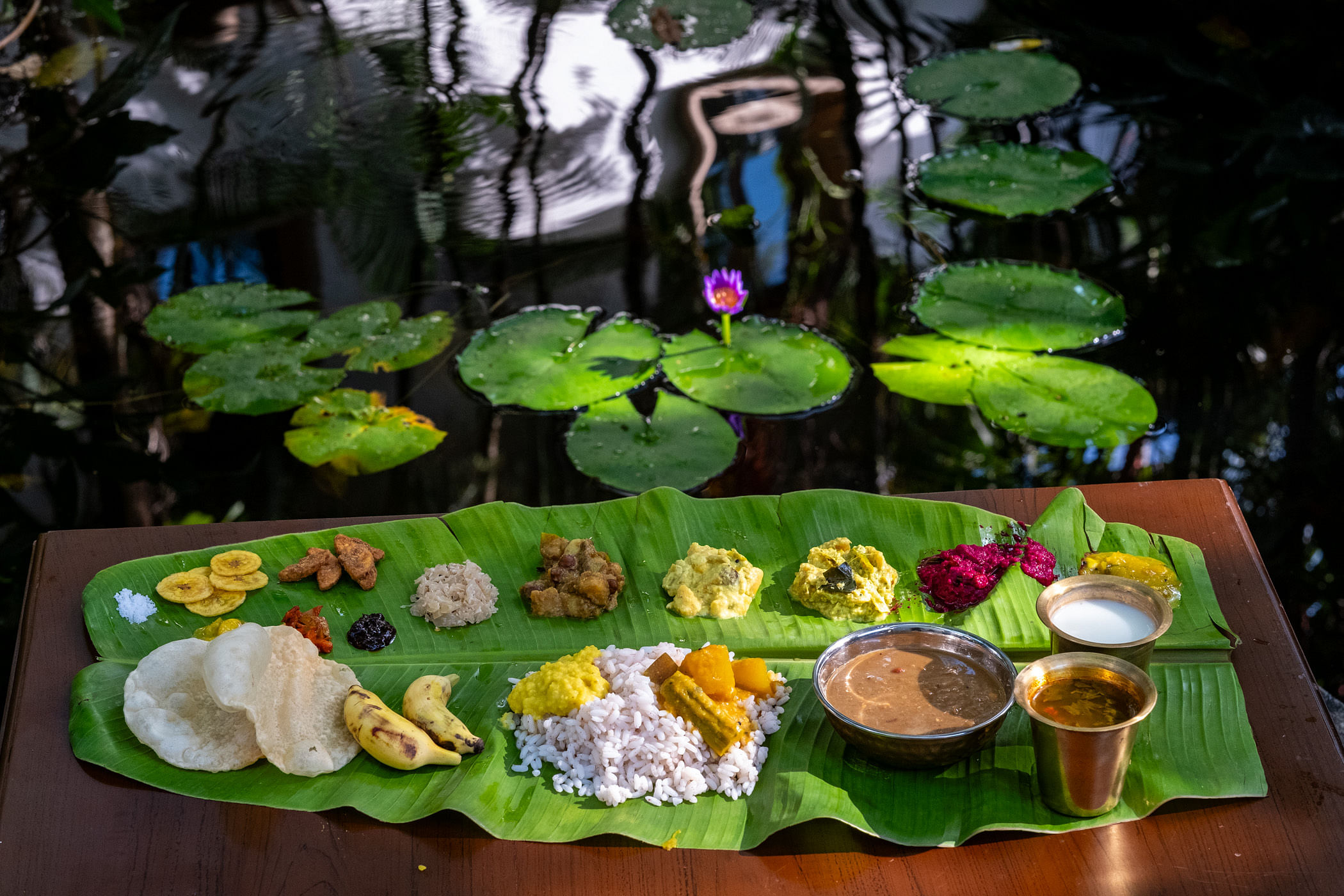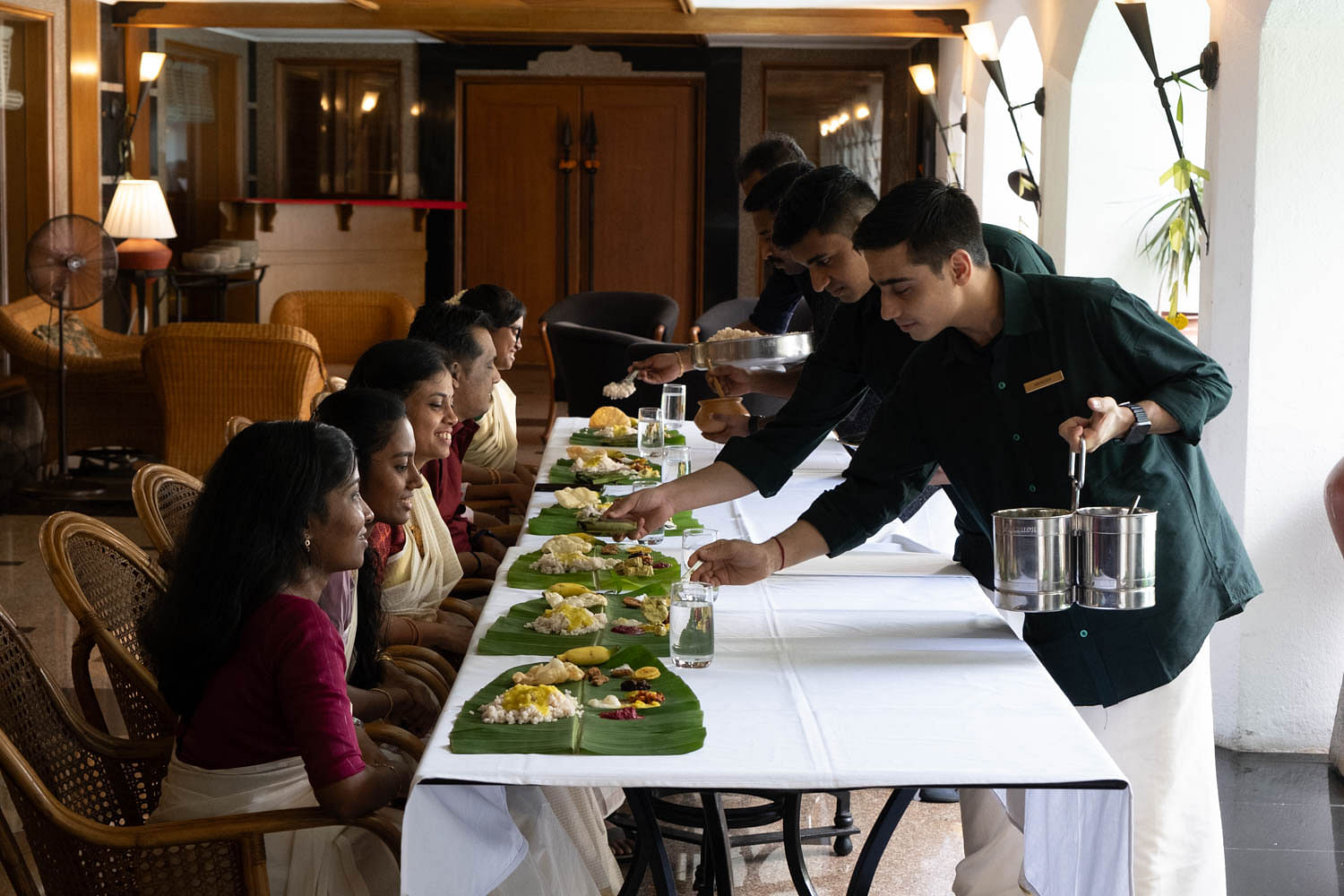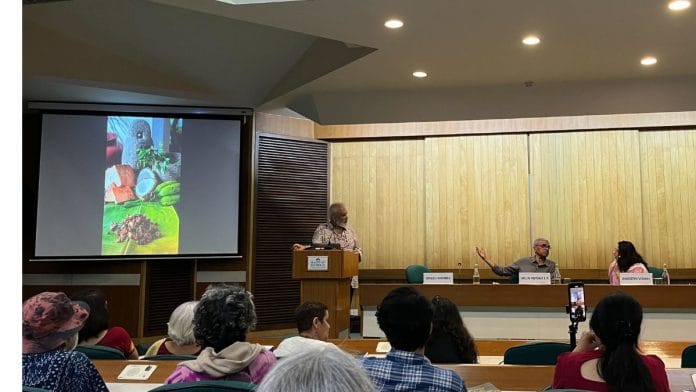New Delhi: When Chef Arun Kumar TR set out to write a cookbook about Onam, he didn’t know what he would find. After all, there are no definitive books written about the harvest festival. He quickly discovered that the gap was not because of a dearth but an abundance. There were just too many Onams.
“It’s very difficult to pinpoint the way to celebrate Onam. Everyone in Kerala does it differently. So people who read the book and say ‘oh my Onam is not like this’, I fully agree with them. This just happens to be my Onam,” he said to ThePrint.
In his book Feast on a Leaf, Kumar takes the reader to Onam at a Nair tharavadu (ancestral house) in central Kerala. Though it’s dubbed “The Onam Sadhya Cookbook”, the former brand chef of Zambar knew from the start he wanted it to be more than that.
“It makes no sense to just put together a bunch of recipes for a book. Today you can turn to Google or even AI for that,” he said at the launch of the book last week at the India Habitat Centre, Delhi.
Food historian, columnist, and the evening’s moderator Anoothi Vishal went so far as to describe the book as a sociological account. The book is rich with autobiographical details, mythology, anecdotes about the restaurant business and even some politics. All of it is neatly tied together with stunning images by Dinesh Khanna.

The hour-long event kept the audience hooked. Khanna’s images brought Kumar’s anecdotes to life. The duo delved into all things Onam — from the pot-bellied men painted with tiger stripes and the pookolam (flower rangoli) competition to tharavadu kitchens and the sadhya itself.
A dying tradition
Very few people in Kerala cook all 20-24 dishes of the sadhya today. Catering companies have replaced home kitchens. This changing nature of the sadhya was a central point of discussion at the jam-packed event.
Kumar quipped that the sadhya now comes in a box—his brother even found a frozen version in a London supermarket.
“The cooking part of the sadhya is a tradition that is slowly dying. But Onam itself and [eating] the sadhya are becoming increasingly popular,” he added.
But is there something you lose when you stop cooking these communal feasts, asked Vishal.
Kumar said the process of cooking brought people together. “It’s a multi-day endeavour and it involved not just your family, but the community as a whole. And that is lost when you just go out to have the meal,” he added.

Maybe it’s this realisation that sets the cookbook portion of Feast on a Leaf apart. Kumar makes the sadhya accessible to everyone. While he gives you the menu for a full sadhya, he also shows you how to plan a sadhya for two, a daily sadhya, and even vegan and gluten-free versions.
The sadhya for two only has 10 dishes including the pappadum and the pickle. It then begs the question—what exactly is a sadhya?
“It’s a feast. The more items you have on the leaf the grander the feast. But I think just adding two or three curries more than your daily meal makes it something to celebrate. It turns the meal into a sadhya,” Kumar said.
And is it still a sadhya if there’s no banana leaf? The chef said yes. It’s all about the balancing of the flavours and the mood of celebration. It helps, he added, if you get into the spirit of Onam and dress up for the occasion.
But there is one thing Chef Arun Kumar is very particular about—how he cooks his sadhya. It’s his family’s version, the way they’ve eaten it for generations. A strict rule—no carrot in the avial. It was one of the things he had to instruct his Tamil chefs on when he first served the sadhya in his Delhi restaurant.
But even here, he’s quick to acknowledge that chasing authenticity in food is a lost cause.
“The version of the sadhya I’ve presented isn’t even the authentic Nair version. There is no such thing. If you go down south to Thiruvananthapuram, the Nair sadhya traditionally includes fried fish,” he said.
Also read: Verghese Kurien hated his job, wanted to leave Gujarat. His legacy retold in new book
Many versions
The Mahabali myth was also broken down at the event. Kumar went back to the puranas for his reading of the “demon king”.
“The story that children are told and what’s in the scriptures is completely different. You’re told Mahabali was a great king and Vishnu came and tricked the king. But in the scriptures, Vishnu is sent as a troubleshooter—to stop the Mahabali from conquering the heavens,” Kumar narrated.
In the book, he also adds that the Brahmanical nature of the myth changed in the 1960s—when the Communist government declared it a state festival.
But as with all things Onam, this retelling is just one of the many versions that exist. The anti-caste reading of the myth places Mahabali as a benevolent Dalit king. The gods, who stand in for the upper caste in this version, were jealous and banished him to the underworld.
In Kumar’s Onam myth, the celebrations are geared toward Vishnu in the form of Vamana Jayanti. And in the popular and anti-caste versions, the people celebrate the annual visit of their beloved king.

When an audience member pointed out this reading of the myth, Kumar added that the government’s co-opting of the myth erased both versions of history from it.
“The idea was to make it available to everybody,” he said. And the sadhya became the perfect vehicle for transforming Onam into a state festival. It’s a tradition that all Malayalis equally partake in.
“We invited our Muslim driver to have sadhya with us at the hotel when we were in Kochi last year. But he politely refused,” Kumar said.
He had a sadhya waiting for him at home—an all vegetarian one.
(Edited by Aamaan Alam Khan)






